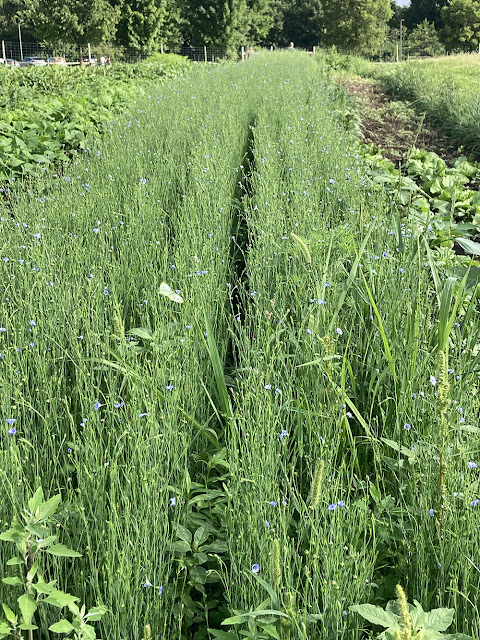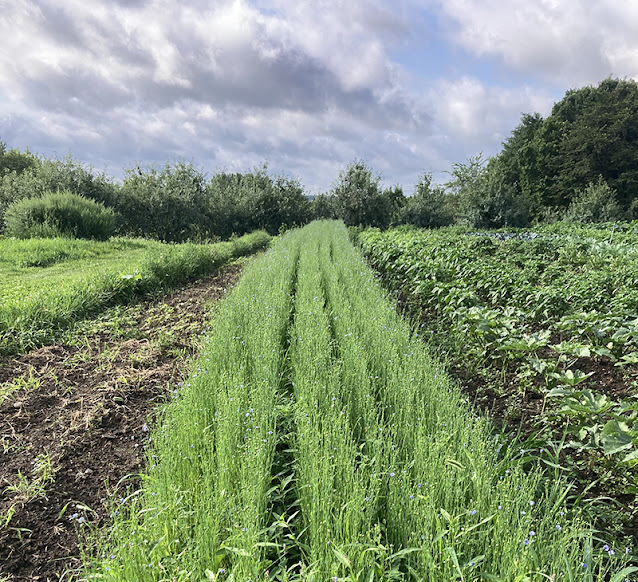A Final Update!
2025 Gale Woods Farm Linen Flax Crop
A month sure passes quickly! To update you on the goings on of the past month…
About two weeks after the harvest, the flax stalks were removed from the fence where they had been hanging to dry. The periodic rains we were receiving were stunting the dry time, so it made more sense to put the stalks under cover in the farm greenhouse to further dry.
The stalks were finally dry by September 23rd, so on the 24th, I used a garden rake to ripple (remove) the seed capsules from the stalks.
There were fewer seeds in each capsule than we had from last year's crop. We are pondering why this is the case. There are a few possible reasons. My strongest leaning is that the late sowing forced the stalks to grow too rapidly in the heat of the summer, and that stunted the seed production in the capsules. Linen flax likes to be sown no later than the middle of the spring, since the timing of flowering at midsummer is what the plant seeks, and this year, due to the late sowing at the end of May, the timespan from sowing to flowering was condensed. And perhaps the seemingly endless rain was also a factor. That could have stressed the stalks. The end result is that we will have fewer seeds to sow next year from this year's crop. Fortunately, the farm has been storing a few pounds of seeds from last year's crop, so we can dip into that for next spring. Those seeds will probably not be as viable, as seeds lose about 5–10% of their viability each year that passes. Still, we will have something to sow next spring, even if it may be another challenging crop!The next step was to fill the tanks with water and weigh down the stalks with large rocks.
Then the daily monitoring of the tanks took place. The past week, from September 24– October 2, has been unusually warm, so the tanks maintained an average temperature in the low to mid-seventies Fahrenheit.
The first full day of the ret shows the beginning of the bacterial action to come.
The subsequent days showed much more bacterial action!
Every day, I pulled stalks from the ret to dry test and confirm their retting state. You want to avoid both under-retting the stalks and definitely avoid over-retting them! If you under-ret the stalks, you can re-ret them later. But there is no turning back from over-retted stalks.
After four days, I drained and refilled a portion of the water to encourage more bacterial action. You can see the extent of the anaerobic bacteria in the foaming of the water!
On October 2, the 8th day of retting, the stalks were showing the release of fibers in my dry tests, so I pulled the stalks, rinsed them…
…and they are currently drying once more in the farm greenhouse. They should be sufficiently dry in time for the public Fall Fest event at the farm, where I will be demonstrating the mechanical processing of the stalks into fiber and the spinning of the fiber into yarn!






































